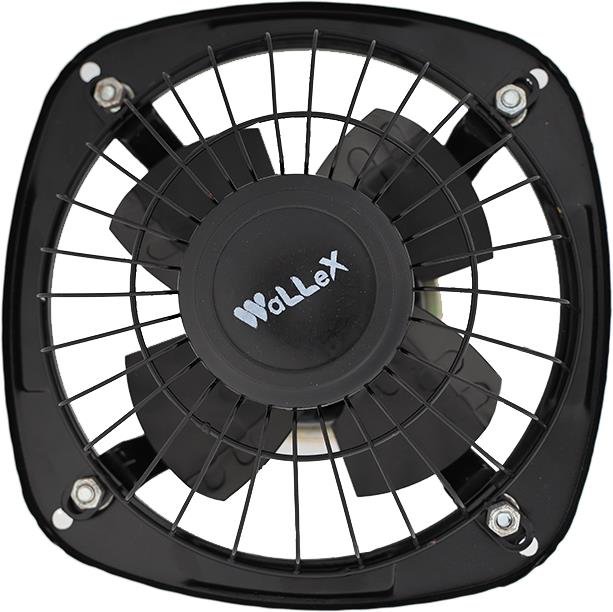Ventilation is a crucial aspect of maintaining air quality in residential, commercial, and industrial spaces. Proper ventilation helps remove stale air, odors, moisture, and airborne contaminants, thereby promoting a healthier and more comfortable indoor environment. Among the various ventilation solutions available, exhaust fans stand out as one of the most effective and widely used options.
Exhaust fans come in various types, sizes, and configurations, each suited for specific needs and environments. Selecting the right exhaust fan requires a good understanding of the different types available and the factors that influence their efficiency and performance. This article delves deep into the various types of exhaust fans and provides guidance on how to choose the right one for your space.
Understanding Exhaust Fans and Their Purpose
Exhaust fans function by expelling unwanted air from a space and replacing it with fresh air from outside. This process helps control humidity, eliminate odors, remove airborne contaminants, and prevent mold growth. In homes, exhaust fans are commonly installed in bathrooms, kitchens, attics, and basements. In commercial and industrial settings, they are essential in places like factories, warehouses, laboratories, and restaurants.
Different applications require different types of exhaust fans, and choosing the wrong type can lead to ineffective ventilation, increased energy consumption, and higher maintenance costs.
Read More: How Many Types of Iron
Major Types of Exhaust Fans
1. Wall-Mounted Exhaust Fans
Wall-mounted exhaust fans are designed to be installed directly on external walls. They are highly effective in spaces where ductwork installation is difficult or where direct ventilation to the outside is needed.
Key Features:
Simple installation on exterior walls.
Direct air expulsion outdoors.
Available in various sizes and power ratings.
Best For:
Workshops
Garages
Warehouses
Utility rooms
Wall-mounted exhaust fans are often more powerful than ceiling fans and can handle larger volumes of air. However, they can also be noisier, especially when used in residential settings.
2. Ceiling-Mounted Exhaust Fans
Ceiling-mounted exhaust fans are installed directly into the ceiling and are commonly used in residential spaces. They typically vent air through ductwork leading outside or into an attic space.
Key Features:
Mounted flush with the ceiling.
Can be connected to duct systems for outdoor ventilation.
Often come with built-in lights and sensors.
Best For:
Bathrooms
Kitchens
Laundry rooms
These fans are generally quieter and more aesthetically pleasing, making them suitable for living areas. Some modern ceiling fans come with humidity sensors, motion detectors, and energy-efficient motors.
3. Inline Exhaust Fans
Inline exhaust fans are installed within the ductwork, away from the area that needs ventilation. They are less obtrusive and often quieter than wall- or ceiling-mounted fans since the motor is located further away.
Key Features:
Installed in the duct line, often in attics or crawl spaces.
Can ventilate multiple areas with a single fan.
Reduced noise levels inside the living or working space.
Best For:
Large bathrooms with multiple vents.
Long duct runs where wall or ceiling fans are impractical.
Commercial kitchens with centralized duct systems.
Inline fans are often used where space is limited or where aesthetic concerns prohibit visible fan units.
4. Window Exhaust Fans
Window exhaust fans are mounted directly in a window frame, making them one of the easiest types to install. They are designed to draw air directly outside, eliminating the need for ductwork.
Key Features:
Compact design fits into window openings.
Ideal for spaces with limited wall or ceiling installation options.
Often comes with reversible airflow options (exhaust and intake).
Best For:
Small kitchens
Bathrooms
Small offices
Apartments
These fans are cost-effective and simple but may not offer the same power or efficiency as wall or ceiling-mounted options.
5. Kitchen Range Hood Exhaust Fans
These specialized exhaust fans are built into kitchen range hoods to capture smoke, grease, and cooking odors.
Key Features:
Integrated grease filters.
Varying extraction power (measured in CFM – Cubic Feet per Minute).
Some models offer ductless recirculating modes.
Best For:
Residential and commercial kitchens.
Proper kitchen ventilation prevents grease buildup, reduces fire hazards, and keeps indoor air fresh.
6. Attic Exhaust Fans
Attic exhaust fans are specifically designed to ventilate attics and upper building areas. They help reduce heat buildup, lower air conditioning loads, and prevent moisture-related problems like mold and mildew.
Key Features:
High CFM ratings for large air volume movement.
Thermostat-controlled models are available.
Some models are solar-powered for energy efficiency.
Best For:
Residential homes with large attic spaces.
Buildings in hot climates to reduce indoor temperature.
Proper attic ventilation can significantly extend roof life and improve indoor comfort during summer months.
7. Industrial Exhaust Fans
Industrial exhaust fans are designed for heavy-duty applications where large volumes of air need to be moved quickly and efficiently. They are built for durability and high performance in demanding environments.
Key Features:
High power motors.
Large blades for maximum airflow.
Designed for continuous operation.
Best For:
Factories
Warehouses
Workshops
Manufacturing plants
These fans are often made of metal and come with protective features like weather resistance and corrosion-proof coatings.
8. Axial vs. Centrifugal Exhaust Fans
Understanding fan mechanics is also important when choosing the right exhaust fan. Broadly, exhaust fans come in two design categories based on how they move air: axial and centrifugal.
Axial Fans:
Move air along the axis of the fan.
Suitable for high air volume with low pressure.
Common in wall-mounted and window fans.
Centrifugal Fans:
Move air at a right angle to the intake.
Generate higher pressure.
Ideal for ducted systems or when airflow resistance is high.
Common in inline and ceiling duct fans.
Choosing between these two depends on your duct length, resistance levels, and airflow needs.
Factors to Consider When Selecting the Right Exhaust Fan
Choosing the right exhaust fan involves more than just picking a type. You need to evaluate several factors to ensure efficiency, longevity, and effectiveness.
1. Airflow Capacity (CFM)
CFM (Cubic Feet per Minute) measures how much air the fan can move in a minute. Higher CFM means more airflow.
Guideline CFM Ratings:
Small bathrooms: 50–80 CFM
Large kitchens: 150–400 CFM
Attics: 800–1600 CFM
Industrial spaces: 2000+ CFM
Choosing the right CFM depends on the room size and the level of ventilation required.
2. Noise Level (Sones)
Noise can be a significant factor, especially for residential use.
Noise is measured in sones:
1.0 sone or below: Very quiet.
2.0–3.0 sones: Moderate.
4.0+ sones: Loud.
For bedrooms and bathrooms, low-sone models are preferred. In industrial areas, higher noise levels might be acceptable.
3. Energy Efficiency
Energy-efficient exhaust fans consume less power and reduce utility bills. Look for models with Energy Star ratings for better efficiency.
Some modern fans also include features like:
Automatic shut-off timers
Motion sensors
Humidity sensors
These features help in minimizing unnecessary energy usage.
4. Installation Requirements
Different exhaust fan types require different installation methods.
Consider:
Access to an exterior wall, ceiling, or window.
Availability of electrical connections.
Space for ductwork if needed.
Professional vs. DIY installation feasibility.
For complicated ducting or high-CFM systems, professional installation may be necessary.
5. Maintenance
Ease of cleaning and maintenance is another important consideration. Kitchen fans often need regular cleaning due to grease buildup. Fans in dusty environments may require frequent filter replacement.
Opt for models with:
Removable covers
Washable filters
Easy motor access for servicing
6. Climate Considerations
In humid or coastal areas, rust-resistant and moisture-proof fans are essential. For hot climates, attic or whole-house fans may be more effective.
Solar-powered exhaust fans are also available for sunny regions, offering long-term energy savings.
7. Aesthetics and Design
In homes and offices where design matters, you may prefer sleek, low-profile models that blend with the décor. Designer exhaust fans are available in various colors and finishes to suit modern interiors.
Conclusion
Exhaust fans play a critical role in maintaining air quality, reducing humidity, and improving comfort levels in both residential and commercial settings. With a wide variety of types available—wall-mounted, ceiling-mounted, inline, window, range hood, attic, and industrial—there’s an exhaust fan suited for every need.
Choosing the right exhaust fan involves assessing your space, airflow requirements, installation constraints, energy efficiency, and noise tolerance. By carefully evaluating these factors and understanding the capabilities of each type of fan, you can ensure effective and long-lasting ventilation for your home or business.
Whether you’re upgrading an old ventilation system or installing a new one, investing in the right exhaust fan will improve indoor air quality and contribute to a healthier living and working environment.










Leave a Reply